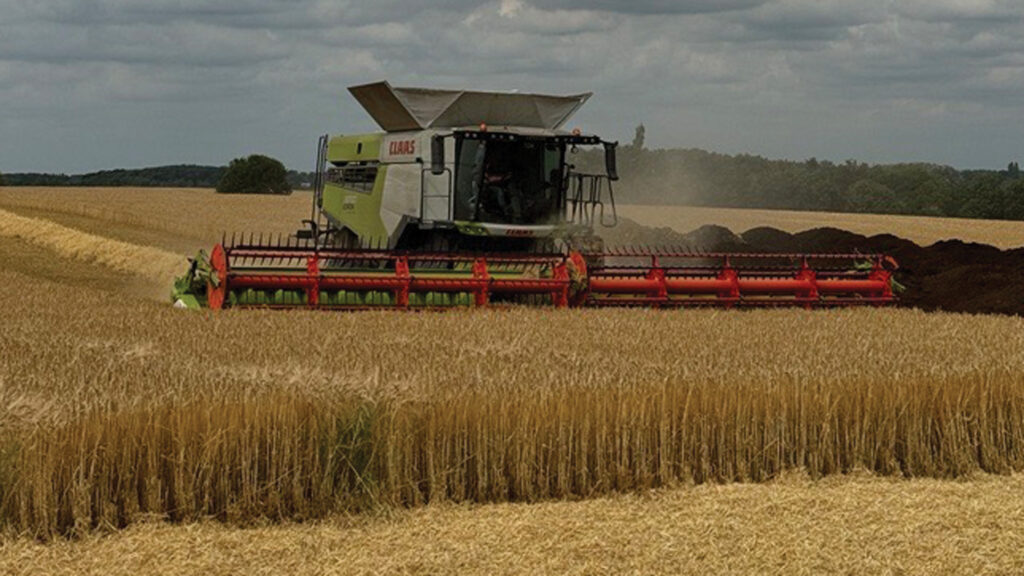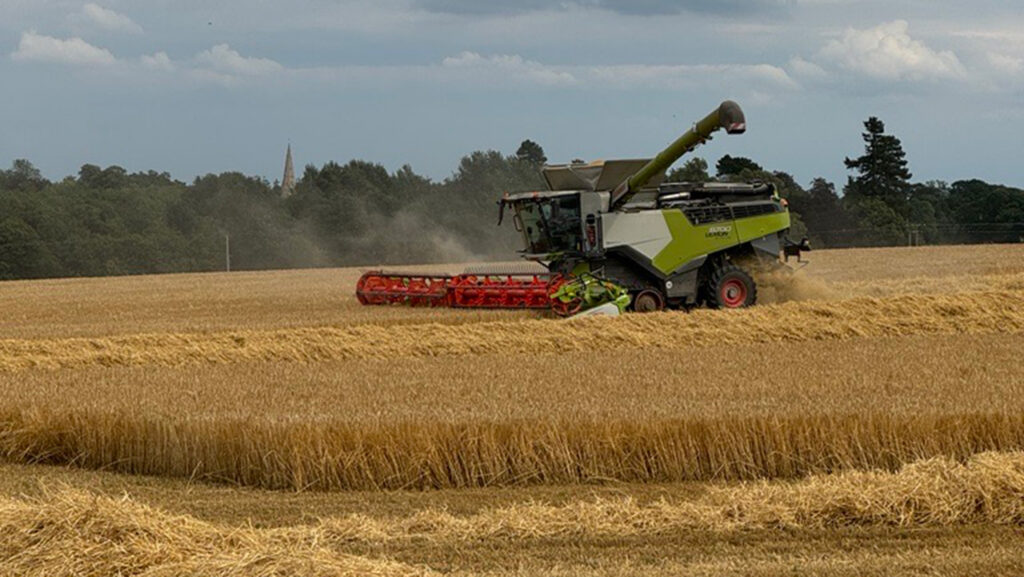Harvest 24: Spring barley beats winter wheat to the combine
 © Ben Abell
© Ben Abell Spring barley beat winter wheat to the combine at Dyson Farming in Lincolnshire, with what is thought to be the first spring barley crop to be cut conventionally this year.
Harvesting Laureate malting barley more than a month earlier than many UK growers, may come as a surprise, but for the firm’s head of agronomy Ben Abell, this is no unusual task.
“We started the spring barley harvest on 19 July – before we had finished the oilseed rape, but that’s not unusual. In fact, cutting spring barley before winter wheat is quite normal for us,” he says.
See also: 9 farmer trials that aim to promote UK pulse production
Wide drilling window
This is because the company farms an area of limestone brash soils between Lincoln and Sleaford which lends itself to drilling spring barley early in the winter months, from November right through to February.
“There is a low grassweed pressure here, so drilling early provides a real opportunity to get crops established before the land dries out in the spring.” The farm has been successfully using the method for about 10 years.
With 150ha of spring barley cut so far this season, initial yields are coming in at 0.5-1.0t/ha ahead of the budgeted 8t/ha. Crops achieved a specific weight of 70kg/hl, grain nitrogen content of 1.3%, and a moisture of 16%.
“We’ve still got a long way to go,” says Ben. A further 350ha of spring barley on the limestone brash is to be cut, out of a total 1,347ha of the spring crop.
“Our spring barley drilling window is from November through to April, depending on soil type.
“We didn’t establish as much November-sown barley as we usually do, with more planted in January as a result of the wet winter.
“As you would expect, the April-drilled crops on heavy land are still looking rather green,” he says.

© Ben Abell
Agronomy
Despite the varying soil types and drill dates, early-sown spring barley is drilled at a standard seed rate of 375 seeds/sq m and crop management does not vary as much as might be expected.
Crops on the brash soils are established with a plough and combi-drill, although the company takes a flexible approach to establishment methods.
The main difference is managing the increased risk of rhynchosporium and that early-sown crops do not receive bagged nitrogen in the seed-bed at drilling.
Instead, most of the nutrition for early drilled spring barley crops come from effective use of liquid digestate from the farm’s anaerobic digestion plant. “This soil type allows early application and travelling,” says Ben.
“The early harvest allows a good establishment of cover crops, ahead of the next cash crop. We would also precede spring barley with a cover crop, unless after root crops,” says Ben.
“The Laureate variety has performed well for us over recent years. It has particularly good resistance against brackling. This season, crops have remained reasonably clean – more so than the wheat.”
Overall, Ben says spring crops are showing real promise this harvest, but winter crops have been really up against it.
“Winter barley was on budget. Oilseed rape in the South performed well at 4t/ha, but in Lincolnshire it was a completely different story with poor yields due to the wet weather which damaged a lot of crops,” says Ben, who hopes the rest of harvest runs smoothly.
Dyson Farming farms a total area of 14,000ha, ranging from Lincolnshire to Gloucestershire, growing a variety of other crops including combining peas, vining peas, potatoes, maize and sugar beet.

